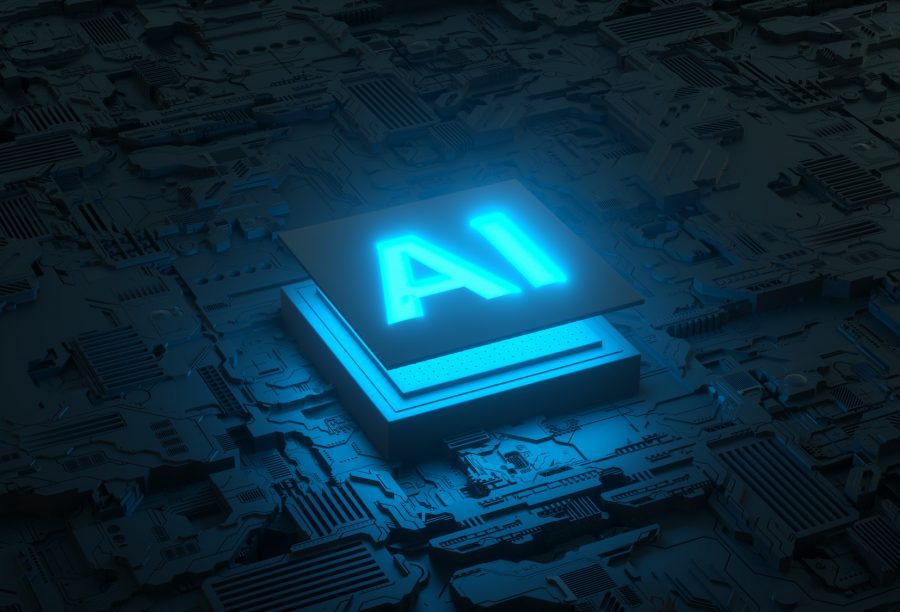
Content strategy is a critical component of any successful marketing or communication campaign. It involves planning, developing, and managing content that aligns with business goals and meets target audiences’ needs.
However, creating and distributing high-quality content can be time-consuming and resource-intensive, especially for businesses with limited staff or budgets.
Fortunately, advances in artificial intelligence (AI) have made it easier than ever to transform your content strategy. AI-driven tools can automate many content creation and distribution tasks, freeing up valuable time and resources for businesses to focus on strategy and creativity.
Related Links
In this post, we’ll explore how AI can help improve your content strategy and offer practical tips for incorporating AI-driven tools into your workflows. Whether you’re a marketer, content creator, or business owner, this post will provide valuable insights on leveraging AI’s power to take your content strategy to the next level.
What Is AI, And How Can It Help With Content Strategy?
Artificial Intelligence, or AI, is a branch of computer science that involves the development of intelligent machines that can perform tasks that typically require human intelligence, such as learning, problem-solving, and decision-making.
AI systems use algorithms and statistical models to analyze large amounts of data and identify patterns, allowing them to make predictions and recommendations based on that data.
Different Types Of AI-Driven Tools That Can Help With Content Strategy
Several different types of AI-driven tools can help improve your content strategy:
1. Content ideation tools
These tools use AI algorithms to generate new content ideas based on keywords, topics, or trends. As a result, they can help you discover new angles for your content and stay ahead of the competition.
2. SEO optimization tools
These tools use AI to analyze your content and provide recommendations on optimizing it for search engines. As a result, they can help you increase your search engine rankings and drive more traffic to your website.
3. Content personalization tools
These tools use AI to analyze user behavior and provide personalized content recommendations based on their interests and preferences. They can help you create a more engaging and relevant experience for your audience.
4. Content distribution tools
These tools use AI to identify the most effective channels for content distribution and automate the distribution process. As a result, they can help you reach your target audience more efficiently and measure the effectiveness of your distribution efforts.
Examples Of How AI Has Been Used In Content Creation And Distribution
AI has already been used in various ways to transform content creation and distribution. For example:
- The Associated Press uses AI-driven tools to generate news articles on financial earnings reports. This has allowed them to produce hundreds of articles in a fraction of the time it would take human journalists to write them.
- Netflix uses AI to personalize its recommendations to each user based on their viewing history and behavior. This has helped them increase user engagement and retention.
- The Washington Post uses AI to optimize its headlines and improve click-through rates on its website. That has helped them increase traffic and revenue.
AI-driven tools can help businesses improve their content strategy by saving time, improving efficiency, and providing insights to inform decision-making.
How AI Can Improve Content Creation
AI-powered content ideation tools can help generate new ideas for content by analyzing data on trending topics, social media conversations, and search queries.
These tools use natural language processing (NLP) to identify patterns in the language used in online conversations and can provide insights into what topics and keywords resonate with audiences.
Additionally, some AI tools can analyze your existing content and identify gaps in your coverage, suggesting new topics or angles you may have yet to consider.
Overview Of How AI Can Help Optimize Content For SEO

AI-powered SEO optimization tools can help improve your content’s visibility in search engine results pages (SERPs). These tools can analyze your content and recommend optimizing it for specific keywords and search terms.
They can also help you identify areas where your content may need to be improved and provide suggestions for improvement. AI can also help automate some of the more tedious aspects of SEO, such as meta tag optimization and internal linking.
How AI Can Help Personalize Content For Different Audiences
AI-powered content personalization tools can help tailor content to different audiences’ interests and preferences. These tools use machine learning algorithms to analyze user data, such as browsing history and social media activity, to recommend personalized content. As a result, IT can help improve engagement and keep audiences coming back for more. Additionally, some AI-powered tools can analyze user feedback and behavior to adjust content delivery and recommendations in real-time.
Overall, AI can help improve content creation by providing insights on what topics and keywords resonate with audiences, optimizing content for search engines, and tailoring content to different audiences’ specific interests and preferences. The following section will discuss how AI can help with content distribution.
How AI Can Improve Content Distribution
AI-powered content distribution tools can help identify the most effective channels for distributing your content to reach your target audience. These tools can analyze audience demographics, behavior, and engagement data to determine the channels where your content will perform best. Additionally, some AI-powered tools can analyze competitor activity data to identify market gaps and content distribution opportunities.
How AI Can Help Automate The Distribution Process
AI can help automate the distribution process, saving time and resources. For example, some AI-powered tools can automatically schedule social media posts based on the most optimal times for engagement.
Other devices can automate email marketing campaigns, sending personalized content recommendations to users based on their browsing and purchase history.
In addition, some AI-powered tools can automatically optimize content for different channels, ensuring your content is correctly formatted for each platform.
How AI Can Help Measure The Effectiveness Of Content Distribution
AI can help measure the effectiveness of content distribution by providing real-time insights on audience engagement, traffic, and conversions.
AI-powered tools can track audience behavior across multiple channels and provide detailed analytics on the performance of each piece of content. This can help content creators and marketers make data-driven decisions about future content creation and distribution.
Also, some AI-powered tools can use predictive analytics to forecast the potential impact of content before it’s even published.
According to a report by MarketsandMarkets, AI in the marketing industry is projected to grow from USD 5.2 billion in 2019 to USD 40.1 billion by 2025 at a Compound Annual Growth Rate (CAGR) of 29.7% during the forecast period.
This indicates that more businesses recognize the value of AI-powered tools for content creation, distribution, and measurement.
Overall, AI-powered tools can help businesses improve the effectiveness of their content distribution efforts by identifying the most effective channels, automating the distribution process, and providing real-time insights on audience engagement and performance.
How To Incorporate AI Into Your Content Strategy
When incorporating AI into your content strategy, there are several vital steps to take:
- Identify your content goals
Before incorporating AI into your content strategy, it’s essential to identify your goals and KPIs. This will help you choose the right AI-powered tools to achieve those goals.
- Choose the right tools
Various AI-powered tools are available for content creation, distribution, and measurement. Choosing tools that align with your content goals and strategy is essential.
- Train the AI
AI-powered tools must be trained on your specific audience and content to provide accurate insights and recommendations. This may involve providing training data or adjusting the tool’s parameters to suit your needs better.
- Integrate with existing workflows
To maximize the benefits of AI, it’s essential to integrate it with your existing content creation and distribution workflows. This may involve adjusting processes and workflows to accommodate AI-powered tools.
How To Choose The Right AI-Driven Tools For Your Content Strategy?
When choosing AI-driven tools for your content strategy, it’s essential to consider several factors:
1. Alignment with content goals
The tool should align with your content goals and help you achieve your desired outcomes.
2. User-friendliness
The tool should be easy to use and integrate with your existing workflows.
3. Accuracy and reliability
The tool should provide accurate insights and recommendations based on reliable data sources.
4. Cost-effectiveness
The tool should provide a positive ROI and be cost-effective for your business.
How To Integrate AI-Driven Tools With Existing Content Creation And Distribution Workflows
Integrating AI-driven tools with existing content creation and distribution workflows can help streamline processes and improve efficiency. To integrate AI-driven tools, consider the following:
1. Identify areas for automation
Identify areas of your content creation and distribution workflows that could benefit from automation, such as social media scheduling or email marketing campaigns.
2. Train the AI
Provide training data and adjust the tool’s parameters to ensure accurate insights and recommendations.
3. Develop new processes
Develop new processes and workflows to incorporate the use of AI-powered tools.
4. Monitor and evaluate
Monitor the effectiveness of the AI-powered tools and evaluate their impact on your content strategy and goals.
By taking these steps, businesses can effectively incorporate AI into their content strategy and achieve their content goals more efficiently and effectively.
Potential Drawbacks And Limitations Of Using AI For Content Strategy
AI has potential ethical content creation and distribution concerns, as with any technology. Some of the critical problems include:
- Bias
AI-powered tools may incorporate biases based on the data they are trained on, which could perpetuate harmful stereotypes or discrimination.
- Lack of transparency
Some AI-powered tools may need to provide clear explanations for their recommendations, which can make it difficult to understand and address any biases or inaccuracies.
- Job displacement
Using AI-powered tools for content creation and distribution may lead to job displacement for content creators and marketers.
It’s essential to consider these ethical concerns when using AI for content strategy and take steps to mitigate them.
Overview Of The Limitations Of AI And How To Mitigate Them
While AI-powered tools can provide valuable insights and recommendations for content strategy, there are limitations to their capabilities. Some of the critical limitations include the following:
1. Lack of creativity
AI-powered tools may have a different level of creativity than human content creators, which could limit the range and quality of content.
2. Inaccuracy
AI-powered tools may provide inaccurate recommendations if they need to be adequately trained or if the data they are trained on is biased.
3. Technical limitations
AI-powered tools may be limited by technical factors such as processing power or access to data.
To mitigate these limitations, businesses can take several steps, such as:
- Providing ongoing training for AI-powered tools to ensure accuracy and relevance.
- Using AI-powered tools and human creativity to balance the benefits of both approaches.
- Regularly evaluating the effectiveness of AI-powered tools and making adjustments as needed.
Explanation Of How To Balance Human Creativity With AI-Driven Tools

While AI-powered tools can provide valuable insights and recommendations for content strategy, balancing these tools with human creativity is crucial. To do so, businesses can:
Use AI-powered tools to generate ideas and insights, but rely on human content creators to bring a unique perspective and creativity to the content.
Develop processes and workflows that incorporate both AI-powered tools and human creativity to maximize the benefits of both approaches.
Provide ongoing training and education for content creators and marketers to ensure they have the skills and knowledge to incorporate AI-powered tools into their work effectively.
By balancing the benefits of AI-driven tools with human creativity, businesses can create more effective and engaging content for their audiences.
Conclusion
In today’s digital age, having a solid content strategy is crucial for businesses to engage with their target audiences and drive growth. AI-driven tools can provide valuable insights and recommendations for optimizing content creation, distribution, and performance, making it an essential part of any modern content strategy.
While there are clear benefits to using AI for content strategies, such as improved efficiency, effectiveness, and personalization, there are also potential drawbacks and limitations that need to be considered. Therefore, it’s vital for businesses to carefully evaluate their needs and capabilities when incorporating AI-driven tools into their content strategies.
If you want to improve your content strategy, consider incorporating AI-driven tools to help generate new ideas, optimize content for SEO, personalize content for different audiences, identify the proper channels for content distribution, automate the distribution process, and measure the effectiveness of content distribution.
However, it’s essential to balance the benefits of AI with human creativity and consider potential ethical concerns and limitations. By doing so, businesses can leverage AI to transform their content strategies and stay ahead of the competition.
Contact Matchbox Design Group Today!
If your website could use a refresh or you’re looking to drive more traffic to your site, fill out the form below and we’ll contact you to learn more about your digital needs.

